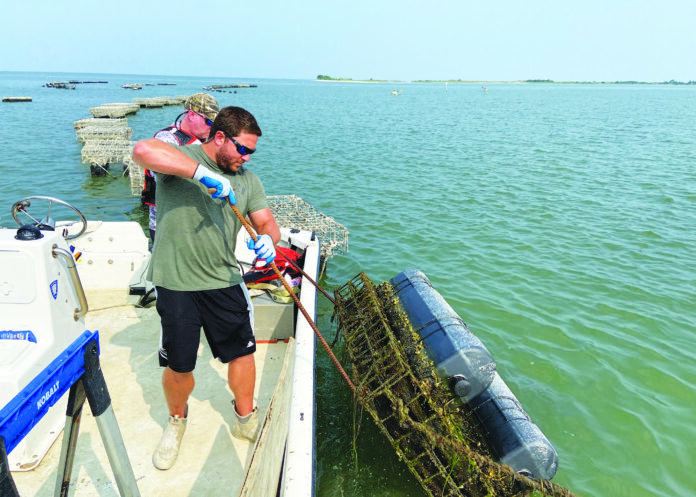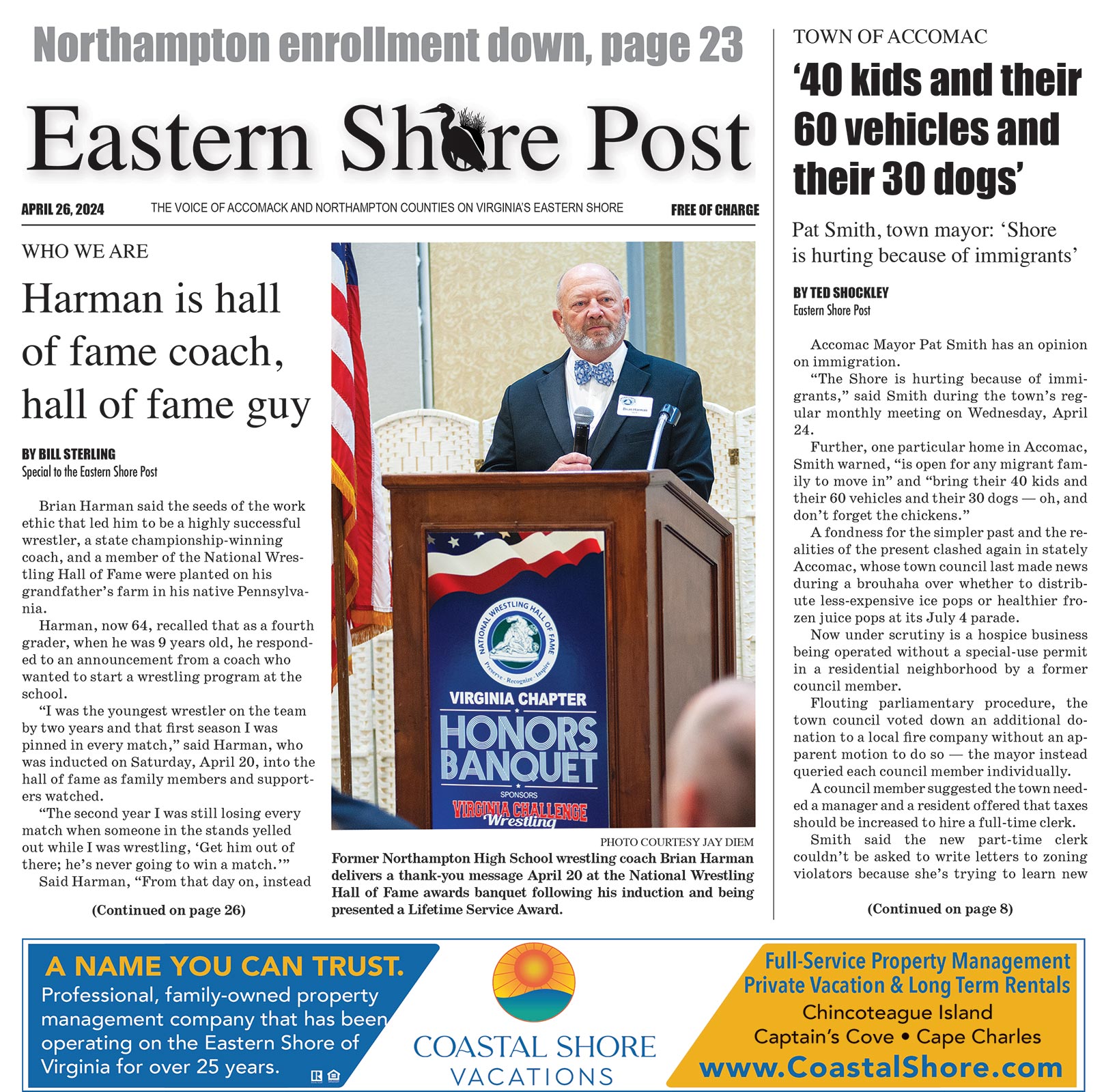
BY JEREMY COX, Bay Journal News Service —
For several years, an unexplained die-off of farm-raised oysters from the Chesapeake Bay to the Gulf of Mexico has perplexed industry members and the scientific community.
What they do know: The bivalves tend to die between May and early July. Most of the victims are market-size oysters or nearly there. And it mainly lays waste to triploid oysters, the type favored by farmers — and many diners, whether they realize it or not — for their faster growth and higher meat quality.
Researchers with the Virginia Institute of Marine Science are trying to uncover the cause before it seriously disrupts the state’s burgeoning $60 million oyster aquaculture sector.
Responding to the industry’s growing calls for answers, the National Oceanic and Atmospheric Administration has awarded $300,000 to the institution to sift through clues turned up by fresh field surveys and lab experiments.
“There’s a lot about oysters we don’t know yet,” said Bruce Vogt, president of Big Island Aquaculture, an oyster farm based in a creek near the mouth of Virginia’s York River. He estimated that he loses 30–40% of his triploids annually to the mysterious die-off. “It’s critical we get an understanding of this.”
Between 2013 and 2018, the number of active oyster farms in Virginia more than doubled, from 60 to 134, according to newly released U.S. Department of Agriculture data.
The businesses lease plots of the bottom of the Bay and tidal rivers from the state, typically raising the oysters in cages or in bags on floating racks until they’re ready to be harvested.
Supporters say the industry’s benefits extend beyond pure economics. They point to research showing how the bivalves filter out nutrients and silt, the two main drivers of water-quality declines in the Bay.
The phenomenon was first reported in 2012. Most aquaculture operations reported die-offs for around 30% of their oyster stock, but some in the lower end of the Chesapeake saw losses of 50–85%.
Such die-offs aren’t out of the ordinary for oysters, said Hamish Small, who is heading the VIMS study.
The bottom dwellers are known to succumb in large numbers to insults such as diseases, toxic algae blooms, sudden drops in dissolved oxygen, and too much or not enough salt in the water.
“Much like us, they’re constantly dealing with stress of some sort,” Small said.
But the die-offs that began in 2012 were different, he explained. Growers couldn’t connect it to any of the typical causes. VIMS researchers were similarly confounded when they conducted their own analysis of oyster health at five sites in the Virginia portion of the Bay in 2014–15. Nothing fit.
The Chesapeake region isn’t alone. Significant losses at oyster farms in the Gulf of Mexico have also sparked extensive research efforts, with few answers to show for it.
VIMS is no stranger to triploids. In fact, their existence can be traced to the work of now-retired VIMS researcher Stan Allen, who first selectively bred oysters to have three sets of chromosomes instead of two (hence the “tri” in triploid).
The innovation rendered the bivalves sterile, tamping down concerns that they might overpower native oysters. And with reproduction removed from the equation, triploids were free to spend most of their energy on growth, resulting in more meat inside the shell.
Today, the extra-chromosome invertebrates are the backbone of the aquaculture industry, representing about nine out of 10 oysters in the farmed marketplace, Small said.
There is no evidence that surviving triploids present any danger to people who consume them, experts say.
To get to the bottom of what’s behind the die-offs, Small and his team are casting a wide net. They plan to dig deeper than the 2014–15 study, “looking under the hood of the gene expression” for clues, said fellow VIMS researcher Ryan Carnegie.
The lab work will test one of the leading theories: that something has gone awry with the oysters’ genetic lines. Triploids are typically produced at hatcheries from bivalves bred and reared especially for the task of making more oysters.
If the research indeed uncovers a hitch in the code, then researchers could use those findings to build up greater resistance in the breeding program, Small said.
Perhaps something in the environment is tripping those genetic switches. The only way to truly know that, Small said, is to observe oysters growing on real-life, tidewater farms.
So, since March, VIMS researchers have been raising their own oysters at two locations: Big Island on the Bay’s Western Shore and Cherrystone Aqua-Farms on the Eastern Shore.
“Comin’ in hot!” A.J. Verderame, a field manager, called out as he dumped a bag of oysters onto a table perched on the deck of a small workboat, making a noise like dozens of dice being rolled at once.
He was joined by Small and two fellow researchers, Hannah Brown and Leslie Youtsey. Each had their own task: slicing up samples of oyster meat, measuring shell widths, gathering water salinity and temperature readings, counting live and dead oysters. (The dead are often slightly open or, if still shut, make a hollow sound when tapped against a hard surface.)
The oysters are reared in mesh bags enclosed in floating cages, just beneath the water’s surface. In the beginning, each bag contained 250 oysters. During a midsummer visit by the researchers to Cherrystone, some of the bags had lost a couple dozen or so besides those culled for lab work.
In other words, it was shaping up to be another typical season on a Virginia oyster farm. But, of course, the study’s goal is to improve on that.
The writer is a Bay Journal staff writer based in Maryland. You can reach him at [email protected].


